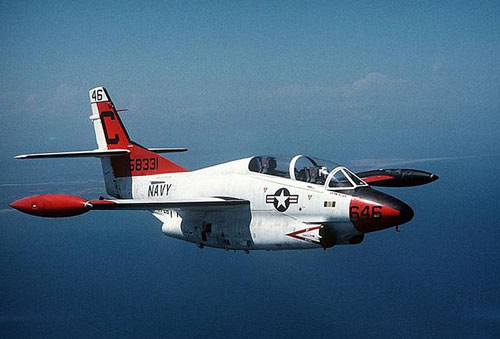T-2 Buckeye
Summary
| Category | Military Training Aircraft |
| Origin country | 🇺🇸 United States |
| Manufacturer | North American |
| First flight | 31 January 1958 |
| Year introduced | 1959 |
| Number produced | 529 units |
| Average unit price | $1 million |
Description
The T-2 Buckeye was a training aircraft on which more than 11,000 pilots of the US Navy and Marine Corps were trained. It was used to train pilots for various missions such as carrier operations, instrument flying, gunnery and bombing, high altitude and high-speed formation flying, and aerobatics.
The T-2 was a highly reliable aircraft, stable, and easy to maneuver, equipped with a sturdy landing gear. The pilot and instructor, sitting in tandem with dual controls, had excellent visibility. The Buckeye could carry an offensive load consisting of machine gun pods, rockets, and bombs.
The initial versions T-2A and T-2B were replaced in 1973 by the T-2C, which featured more powerful General Electric engines. Two variants of the T-2C were also developed for export: the T-2D for Venezuela and the T-2E for Greece. Recently retired from service after more than 40 years and 315 units built, the T-2 Buckeye was replaced in the United States by the T-45 Goshawk, derived from the British Hawk.
Technical specifications
| Version: T-2C | |
|---|---|
| Crew | 2 pilots |
| Maximum speed | 838 km/h (521 mph) |
| Wing area | 24 m² (258.3 sqft) |
| Wingspan | 11.6 m (38.1 ft) |
| Height | 4.5 m (14.8 ft) |
| Length | 11 m (36.1 ft) |
| Service ceiling | 13,533 m (44,400 ft) |
| Empty weight | 3,652 kg (8,051 lbs) |
| Max. takeoff weight | 5,931 kg (13,076 lbs) |
| Powerplant | 2 x turbojets General Electric J85-GE-4 delivering 1338 kgf each |
Current operating countries
All operators
